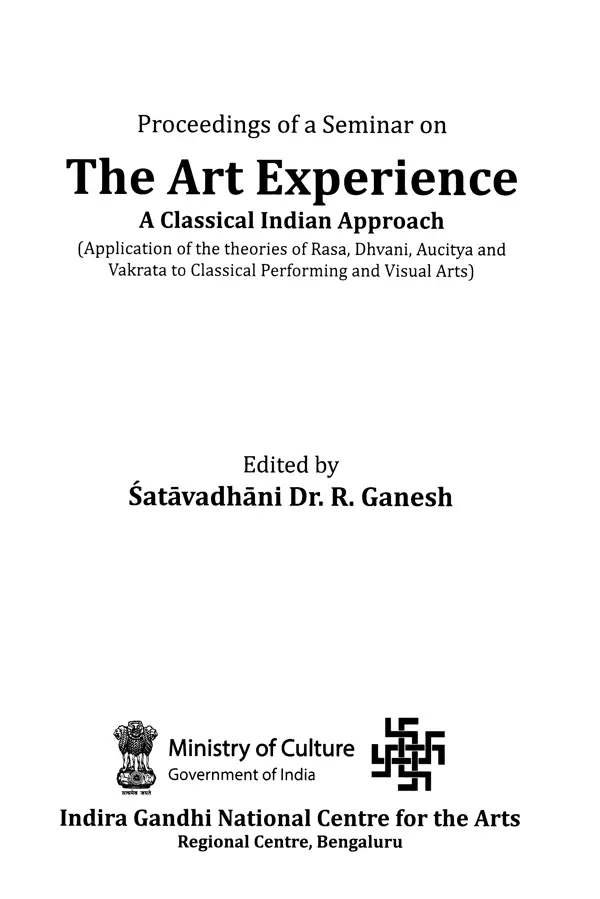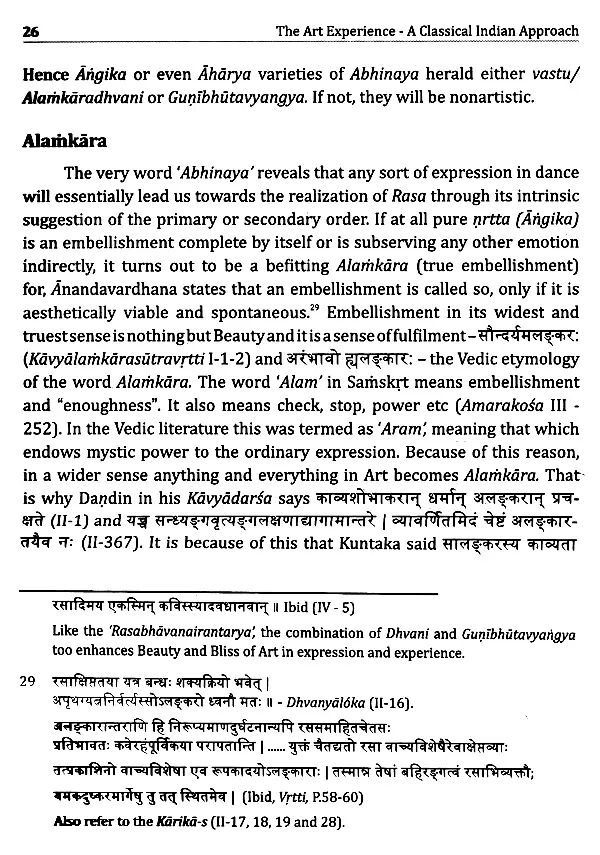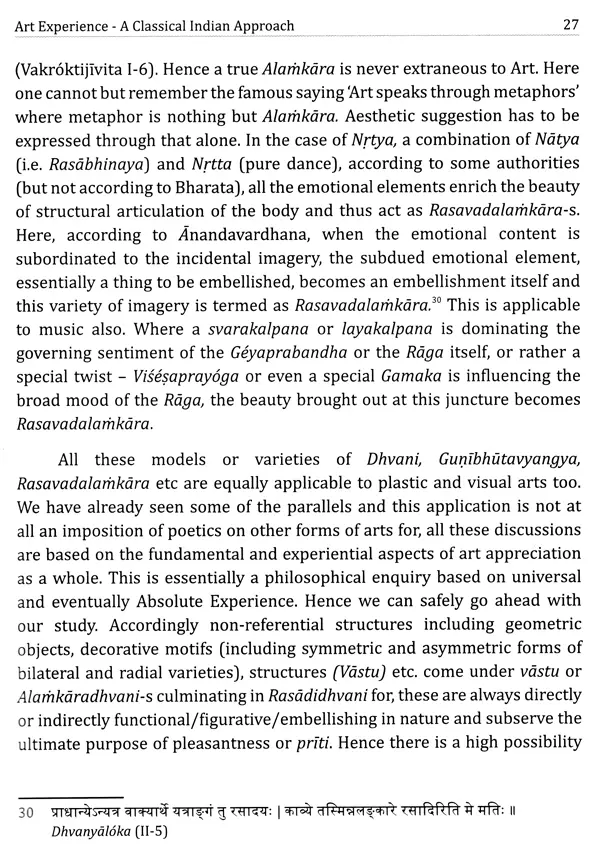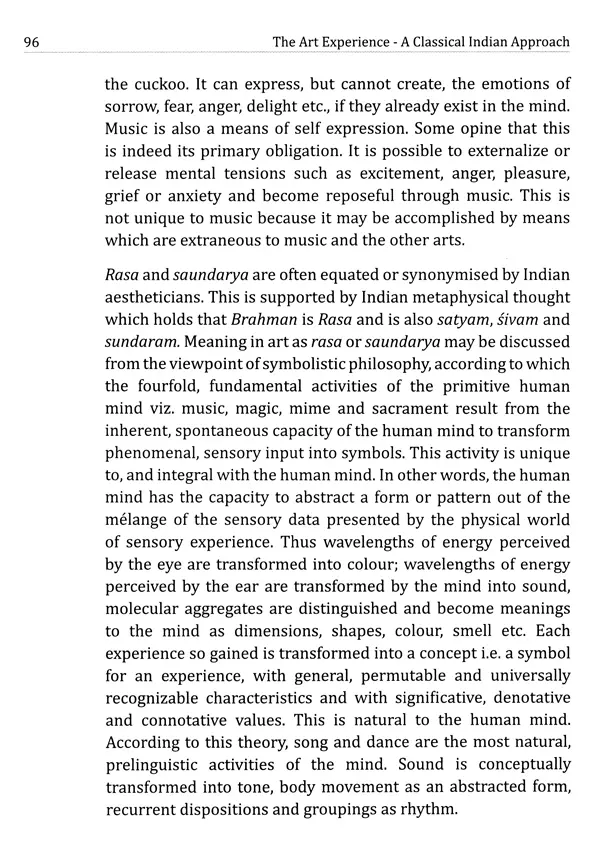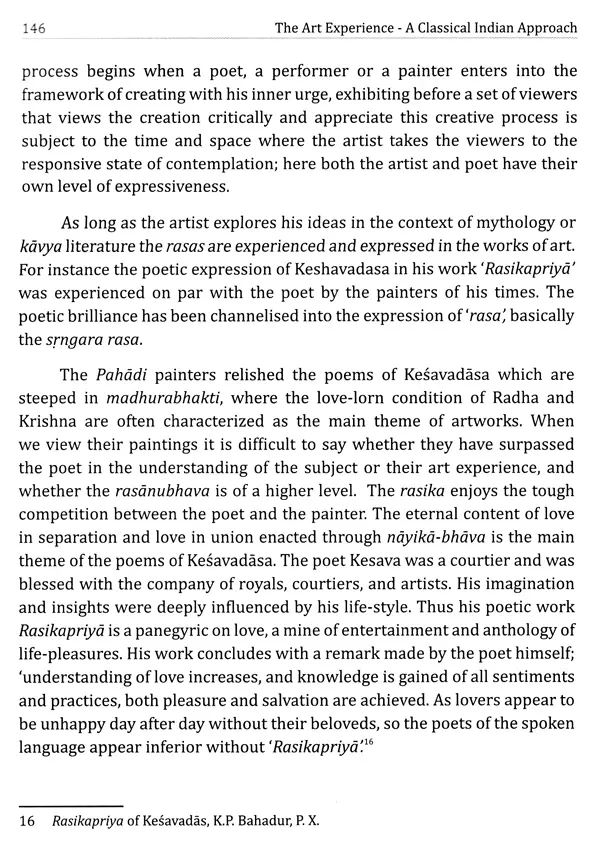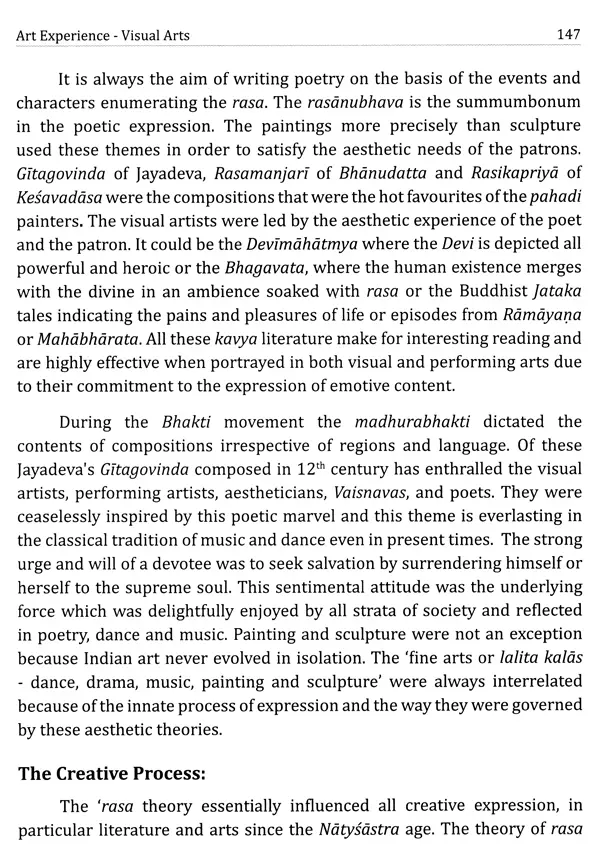
Proceedings of a Seminar on The Art Experience (A Classical Indian Approach)
Book Specification
| Item Code: | UAT991 |
| Author: | Satavadhani Dr R Ganesh |
| Publisher: | Indira Gandhi National Centre for the Arts |
| Language: | English |
| Edition: | 2022 |
| ISBN: | 9789391045203 |
| Pages: | 180 |
| Cover: | PAPERBACK |
| Other Details | 9.50 X 7.00 inch |
| Weight | 360 gm |
Book Description
Art Experience: Application of the theories of Rasa, Dhvani, Auchitya and Vakrata to Classical Performing and Visual Arts, is a unique undertaking by the IGNCA in that it presents a unified analysis of classical art forms based on cardinal aesthetic concepts - rasa, dhvani, auchitya and vakrata. These tenets are doubtless capable of analyzing any art form, classical or non-classical, belonging to any spatio-temporal domain, both from the perspective of the artist and the connoisseur.
An attempt to expound these canons as applied to basic art forms within two covers was a long-felt need, and the same has been attempted in the present volume. Towering scholars well-versed in the nuances of their chosen field of study have contributed essays to this volume from their own perspectives.
Perception of Indian art has its roots in philosophy, aesthetics, psychology and cognitive sciences that are distinct to the Indian context. The Rasa theory, as propounded in the Natyashastra has served both as a theory of Indian aesthetics, and as a concept or framework for empirical analysis of artistic perception. The concepts of Rasa, Dhwani, Vakrokti and Auchitya are organizing principles of this theory they form the basis of qualitatively understanding or assessing performance and more importantly, serve as prerogatives for composition.
Artistic experience is an inter-subjective phenomenon. Experience is a subtle phenomenon involving the physical, metaphysical and sublime - which we understand neuroscientifically as a gestalt of neuron-to-cognition-to largescale brain network pathways. While there is great individual variation and cultural conditioning at play in perception of art - there are certain unifying axioms at play - which the Natyashastra describes in detail. While an ordained Rasa can never be directly transmitted to another, the theory through these concepts, offers a process methodology of how sound, movement, symbol, shape, texture and posture and gestures operate together to generate Rasa. Upon close observation, these concepts are rooted in empirical observations of the human mind. Hence, the principles of Rasa Theory offer a methodology for the composer, artist, critic and scientist alike to unravel the mystery of art as communication. We still do not understand where experience occurs, or what is the space in which experience is observed in the inner mind. Further studies rooted in Indian performing arts will be insightful in examining the experience of art more wholistically.
The seminar proceedings book contains 5 papers which discuss, debate and examine the limits, issues, promises and application of this theory across music, dance, visual arts, poetry. Each chapter primers a deeper understanding into how composition-performance and performance-perception binaries are linked in a discipline. Despite several centuries of evolution of these individual artforms, with many changes in context, grammar, vocabulary and formats, these principles still inform todays practice. This book will be valuable to scholars and practitioners alike who seek an erudite understanding of how performance practices are connected to philosophies of the mind.
The creative and analytical approaches to art and its appreciation have been a perpetual pursuit of Indian thinkers over the millenia. The fundamental theory of rasa, as known to us, was first expounded by Bharatamuni in his Natyashastra, as applied to natya, the total theater. A long legacy of commentators have added their insights to this theory and have made it robust, both philosophically and artistically. The concept of dhvani propounded by Anandavardhana, along with vakrata as explained by Kuntaka have opened up two perspectives of looking at rasa, i.e. from that of the artist and the connoisseur. Auchitya is held as the highest analytical canon by all theorists in realising rasa. Thus was crystallised the four-folded theory of Indian Aesthetics - rasa, dhvani, auchitya, and vakrata.
Although these concepts seem to be centered around literature and theater, they certainly have the potential to analyse other art forms such as music, dance, painting, and sculpture, all in the non-referential frame. Aestheticians of a later period lacked a first-hand exposure to art forms other than literature and hence they did not extend their treatises to allied art forms. The same is true of writers in the period of Indian renaissance, barring honourable exceptions like Dr. V. Raghavan. The western way of dry theorizing as per the whims and fancies of individual theorists, which is far away from adherence to experience, lead to confusions in the field of Indian Aesthetics in the post-independence period. Socio-political ideologies and the misdirected application of Psychology occupied the central portion of discourse regarding aesthetics and rasa was driven to a back seat. Unfortunately, most Indian scholars lack the conviction to present the reality. It is this responsibility that has been shouldered by the IGNCA, RCB, Bengaluru in taking up the present project.
This volume on Art Experience consists of four parts: The first part is an introductory essay by Shatavadhani Dr. R. Ganesh that deals with the application of the aforesaid concepts to all basic art forms, drawing profusely from original sources to support this integrated approach.
**Contents and Sample Pages**
